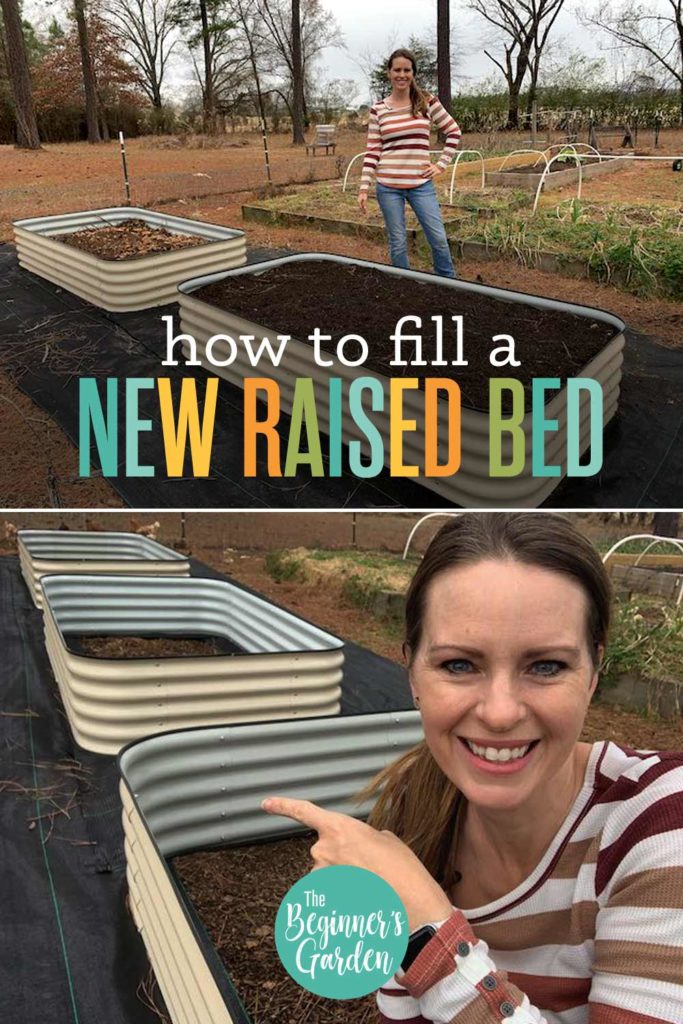How to Fill a NEW Raised Bed with Quality Ingredients (and save money by using what you have)
If you’re installing a new raised bed this year, how do you fill it as inexpensively as possible but also provide quality soil that your new vegetables will thrive in?
That’s the dilemma many gardeners face. I’ve had my share of disappointing experiences by using the cheapest bagged soil I could find. I learned the hard way that you get what you pay for. But if you’ve ever set out to fill a raised bed with quality ingredients you have to purchase, you know that the cost of filling a raised bed can get pretty steep.
In a decade of growing in raised beds, and even by comparing different soil mixes in this side-by-side raised bed soil mix comparison, I’ve settled on a method to filling new raised beds for cheaper than you realize — without sacrificing quality.
My BEST harvests EVER have come from using this method to fill my new raised beds.
And the good news is, this method is adaptable to what you may (or may not) have on hand.
Before we get to the steps to filling a new raised bed, let me share the basic principles for you, so you can adjust it to your unique situation.
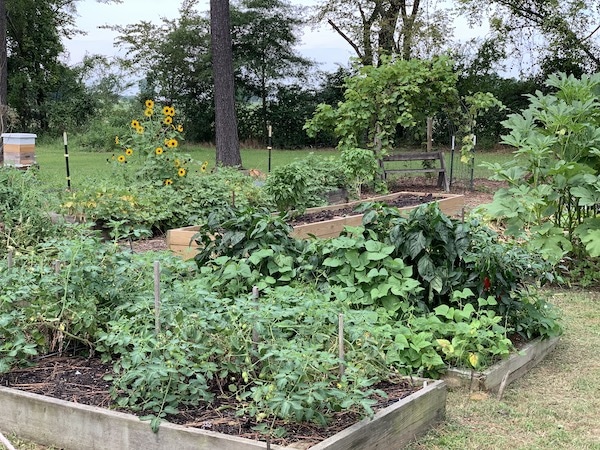
Place the BEST soil in the top 6″ of the raised bed.
Regardless of whether your raised bed is 6″ deep or 36″ deep (I have both…with everything in between), it’s the top 6″ that matters the most. With annual vegetables, herbs, and flowers, the biggest concentration of their roots will fill this zone.
That’s why filling the rest of the bed with high-quality — but expensive — soil is a waste of money. It’s simply not necessary.
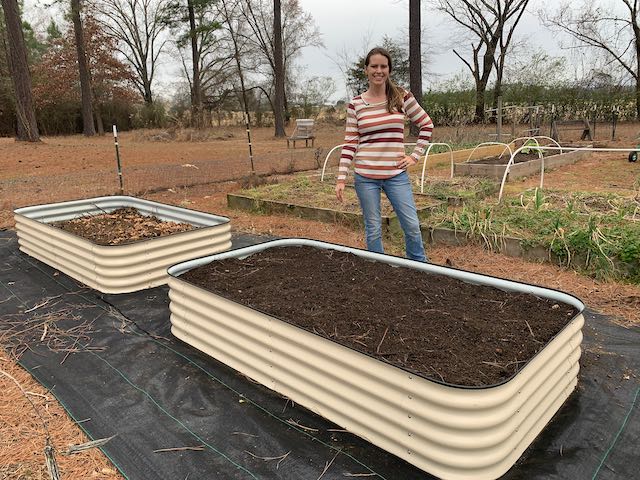
(Get 5% off with my promo code JOURNEYWITHJILL at my affiliate link here.)
Choose High Quality Compost + Topsoil
Now that we’re only concerned with the top 6 or so inches, we can afford — pun intended — to be more picky with what we choose to make up that top six inches. For this, I consistently get the best results with roughly a 50/50 blend of topsoil and high-quality compost.
Let’s talk about those two critical ingredients.
Topsoil:
Topsoil technically refers to the top layer of the natural ground, beneath any grass or weeds. It’s rich in minerals and organic matter and will form the “structure” of your raised bed soil.
What options do you have for topsoil?
- Native soil from your property
- Bagged topsoil from your garden center
- Bulk topsoil from a local nursery or landscape company
Best Choice: bulk topsoil. I’ve used each of these options, and the best one for me has been the bulk option. Since I have a large garden with lots of raised beds, I always find uses for this, and it runs about $30 per cubic yard. It goes a long way.
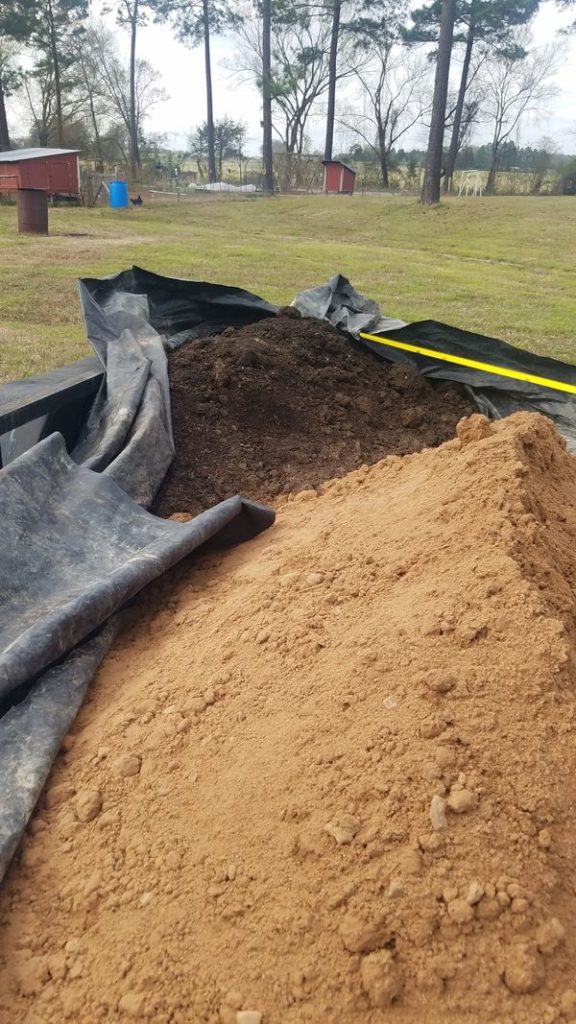
The biggest challenge for most gardeners is getting a cubic yard delivered, because unless you have access to a trailer, that’s going to be an extra cost. And, if you’re only growing in a couple of raised beds, you may not need this much.
Easiest Choice: bagged topsoil. I admit, I don’t use this option enough to have specific recommendations on brands, but when I have needed just a bag or two, I usually go with a basic topsoil without anything extra added. (If you have brand recommendations, feel free to share in the comments!)
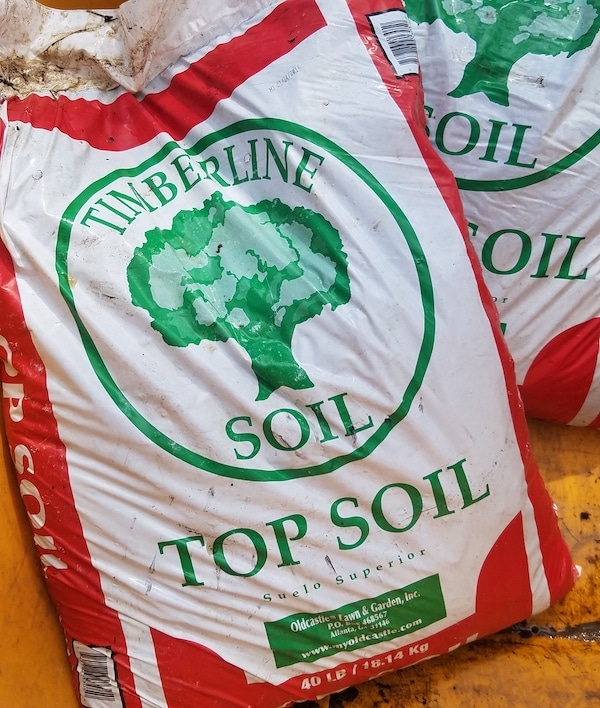
Cheapest Choice: native soil. If you need to level an area of your property or you have extra soil from a building project, native soil is a great option for a raised bed. (Just be sure it hasn’t been sprayed with herbicides in the past.)
Native soil is rich in nutrients, most likely, and will provide plenty of structure your raised bed soil needs. The main drawback here is that your native soil is likely full of weed seeds. If you use this option, I’d recommend layering the compost on top of the topsoil to keep those weed seeds from accessing sunlight.
Now that we’ve explored topsoil options for raised beds, let’s go to where the “money” is — both in filling the bed and in the results you’ll see: high quality compost.
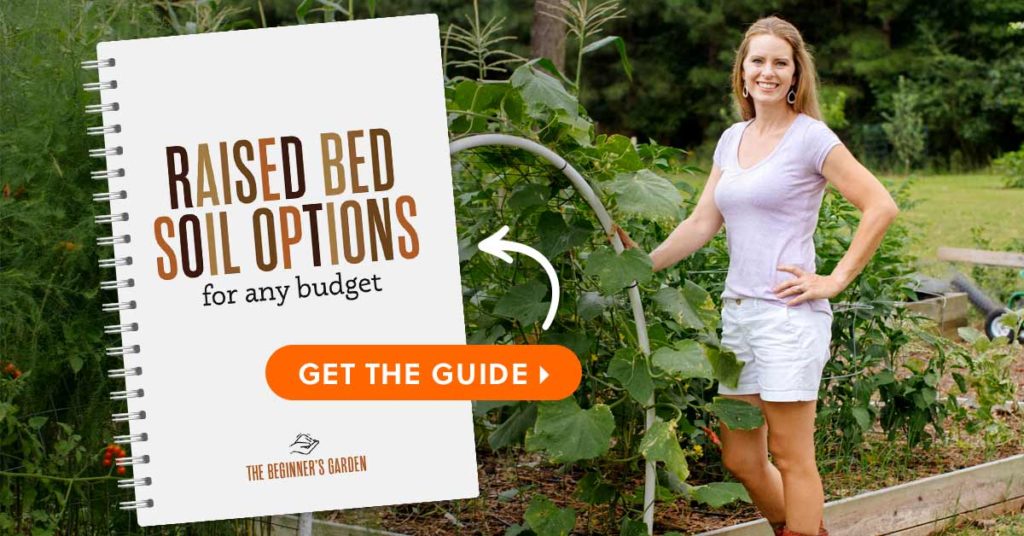
Compost
Compost is the ingredient that will make the biggest impact on the health of a raised bed, so this is an area to pay close attention to. Again, you have options here:
- Homemade compost
- Bagged compost
- Bulk compost from local nursery or landscape company
Best Choice: bulk compost. When you obtain compost from a source that offers high-quality, chemical-free compost, you have struck gold. In my experience, my best gardens grow with this high quality compost. Since the composting process used was likely a “hot composting” process, weed seeds and diseases have been killed, and the raw ingredients are no longer recognizable.
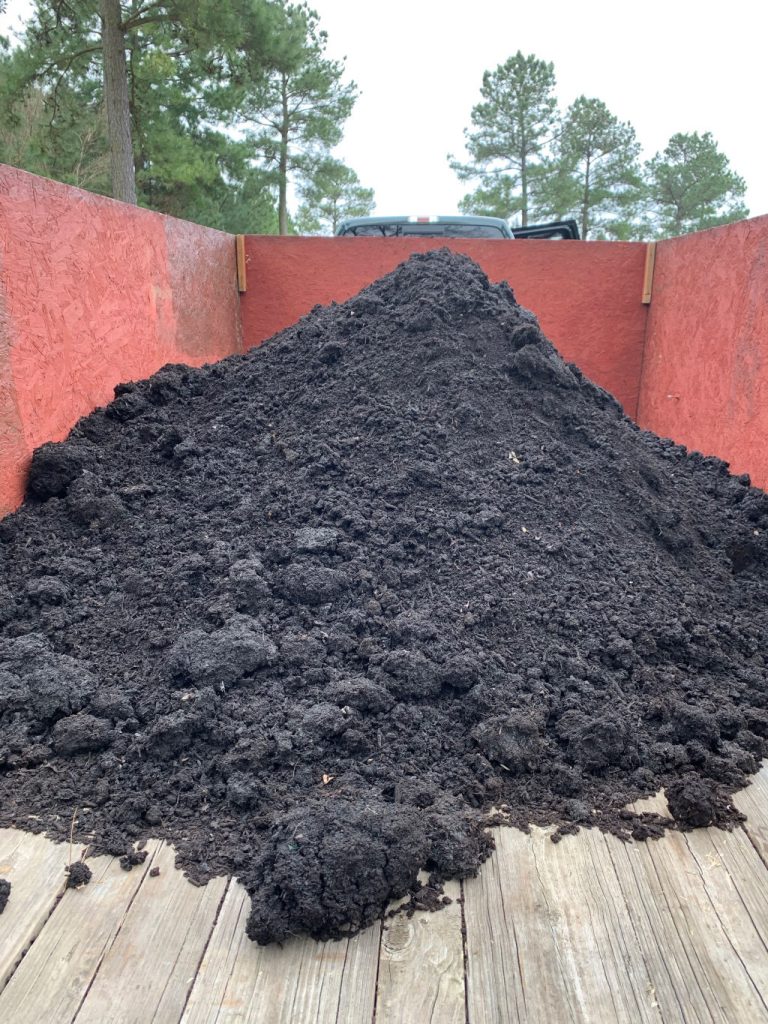
You can find a local source of high-quality compost here, but if your state isn’t listed (mine isn’t), that doesn’t mean you are out of luck. Ask your local nursery or landscaping company how their compost is produced (or where they get their compost from). Ask local gardeners for their recommendations. But when in doubt, ask for a sample, and conduct a bioassay test to make sure it’s untainted.
You will pay for good compost. I pay $50/cubic yard, but it’s worth every penny — both for filling the raised beds and for amending the soil before each subsequent plantings.
Easiest Choice: bagged compost. I admit, this is a tough one for me. I haven’t found a bagged compost I love at my big-box stores. I’ve had issues with “manure compost” because my plants haven’t grown well — too many salts I think — and other bagged compost seemed to contain too much bark content for my preference.
Many gardeners I know swear by Soil3, and if I didn’t have a local source of bulk compost, I’d probably try it out. (If you have good experience with a bagged organic compost, please share in the comments!)
Cheapest Choice: homemade compost. Most gardeners adopt the practice of composting at some point. If you have homemade compost that has fully broken down, this is a great way to fill the tops of your raised beds. However, if you use a “lazy composting” method like I do, be prepared for lots of weeds since the compost process didn’t get hot enough to kill them. Still, it’s an easy and cheap way to fill a new raised bed if you have it.
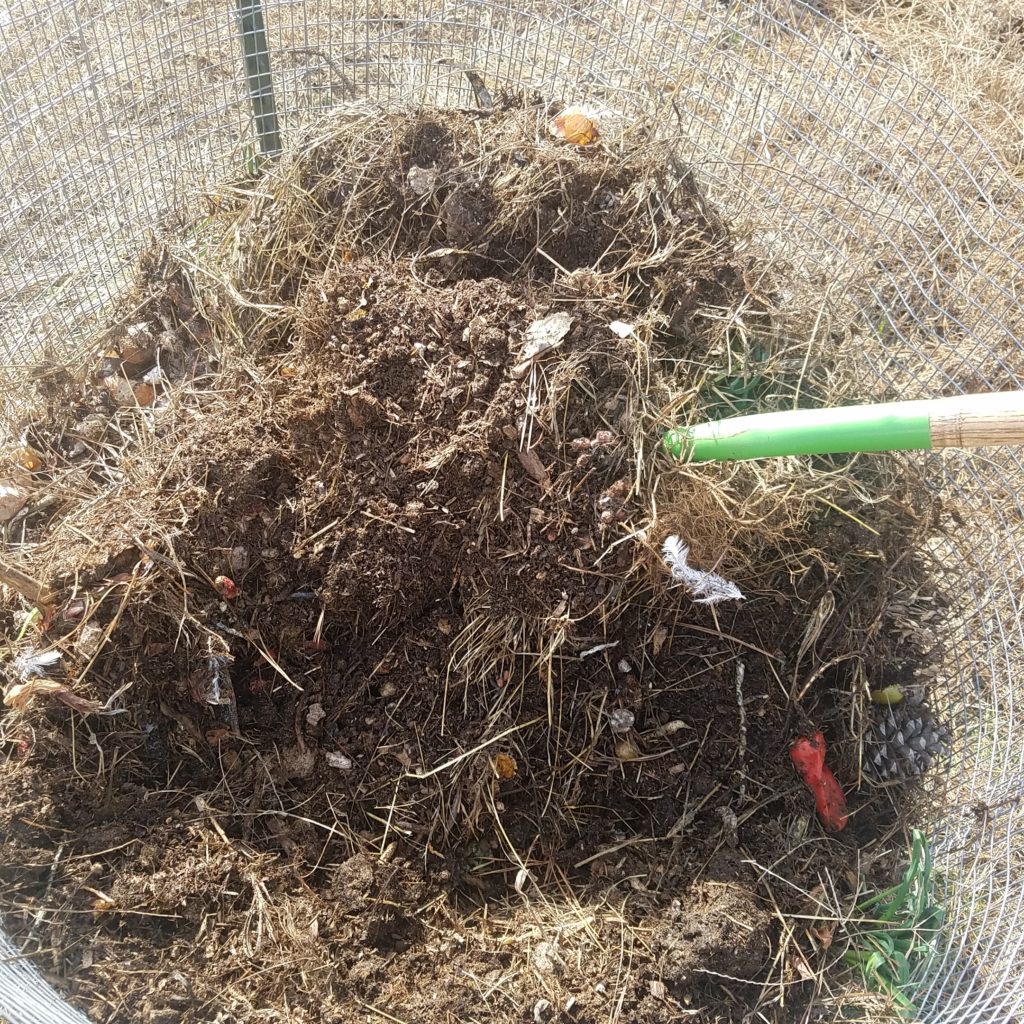
Once you’ve selected your sources for topsoil and compost, choosing what to fill the bottom of your new raised beds with is much easier.
Fill the bottom of the bed with a variety of organic materials
At the end of the winter, I begin collecting organic materials from my property to fill the bottom of my raised beds with. The goal is to provide bulk — in the form or organic matter — that will break down slowly over the course of the season.
Not only will this save money (because you’re using what you already have on hand), but as those materials break down, they serve as a deep nutrient source and moisture base for plants as they grow.
What do you fill the bottom of your raised bed with?

Though this isn’t an exhaustive list, here’s what I have used in the past:
- sticks or logs (borrowing from the hugelkultur garden method)
- pinecones
- deciduous leaves
- branches from pruned trees or bushes (like blueberry bushes)
- homemade compost not fully broken down
- straw (not hay)
- shredded paper
- newspaper
- dead, not-diseased, crops from last year’s garden (okra stalks, corn stalks, broccoli, etc.)
- manure with or without bedding included
- early spring weeds
- anything you would normally put in a compost bin
As you can see, the options are many!
Steps to Filling a New Raised Bed
In this article, we started from the top down, but when you actually go to fill your new raised bed, here are the steps you’ll want to follow from the bottom up — it’s easy as 1-2-3!
- Line the raised bed if preferred (see this article: What do I put on the bottom of my raised beds?)
- Fill up to the top 6-8″ of the bed with collected organic matter.
- Fill the rest of the bed — the top 6-8″ with a blend of topsoil and compost.
Need a visual? In this video, I show you exactly how I do it:
One Final VERY IMPORTANT Consideration
While this is my go-to method and it’s one that has produced the BEST harvests for me over the past three years of any method I’ve used, it isn’t without a drawback. Thankfully, as long as you’re aware of it, you can deal with it.
The raised bed soil WILL settle. A LOT.
Since the bottom of your bed is filled with organic matter that will begin decomposing immediately (which is a good thing for plants!), you will notice that the level of the soil will drop. You’ll first notice this after a rainfall.
How to deal with the settling of soil in the raised bed?
- Fill the bed with soil to the TOP.
- Plan to “top off” the bed as needed with compost or a topsoil/compost blend; if you can fill the raised bed a few weeks before planting, this will allow you to keep “topping it off” before you plant. If you don’t have time to do this, it’s ok; just fill to the top the first time and plan to “top off” after your plants harvest.
- Avoid planting perennial crops, at least the first year. Perennial herbs, strawberries, asparagus, etc., will sink along with the soil, and this may cause problems in future years especially as the lip of the bed starts to cast shade on these crops. In my opinion, annuals are best for a first-year raised bed filled in this way.
Ready to fill and grow in your new raised beds?
Be sure to grab my Raised Bed Soil Options Guide for Any Budget for more details on the options you have available!


